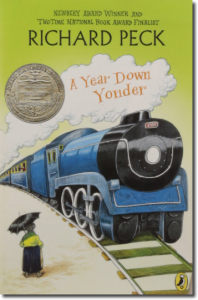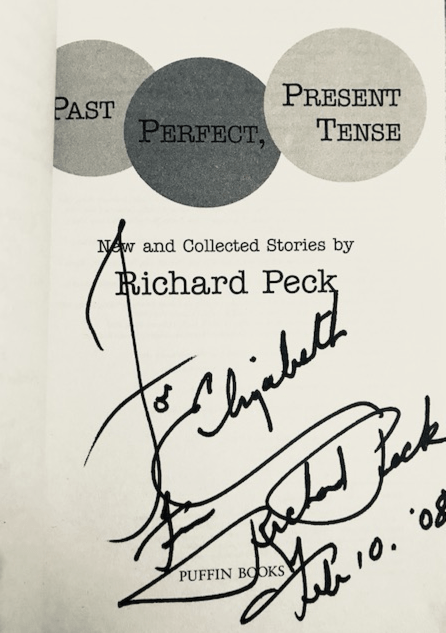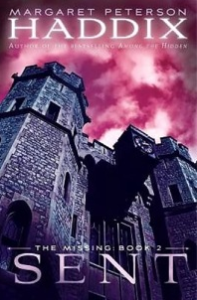Spellbinding Firsts
 What is it about one book that you can’t put down once you start reading, and another that you can’t get past the first few pages? “Magic?” you say. I’d have to agree, if the magic is that of an intriguing story well told.
What is it about one book that you can’t put down once you start reading, and another that you can’t get past the first few pages? “Magic?” you say. I’d have to agree, if the magic is that of an intriguing story well told.
How does a writer work that magic into a story? How do we conjure the spell?
Multiple Newbery Medal winner, Richard Peck, shed insight on the magic behind great beginnings in an article in that appeared in the September/October 2006 issue of The Horn Book Magazine. Then, at a SCBWI annual summer conference, he expanded on his theory that, “You are only as good as your first line.” The secret he related was that, “the essence of the entire story should be encapsulated on the first page.” Yes, the entire story…is an expanded reflection of the first page.
No wonder Richard Peck revises his first chapter again and again, and then once more after he’s finished the book. Because…
The first chapter is the last chapter in disguise.
Peck keeps working on the beginning of a story until he can answer each of the following questions with a satisfied “Yes”:
Does it intrigue? Does it invite? Does it work?
He should know. Multiple Newbery Medals don’t lie. Applying concepts to my own writing is always easier when I have quality examples to study for structure. The following books provide insights into how great beginnings work, each in its own way:
The Kiss of Deception
The Kiss of Deception, the first in The Remnant Chronicles series by Mary. E. 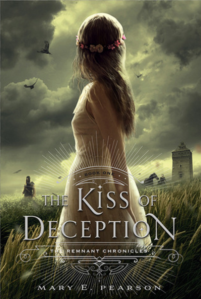 Pearson, is expertly crafted in many ways. The beginning is no exception. The opening paragraphs wrap us in a lyrical voice and language that intrigue, engender suspense, and unfold threads of magic that alight to weave their magic throughout the series:
Pearson, is expertly crafted in many ways. The beginning is no exception. The opening paragraphs wrap us in a lyrical voice and language that intrigue, engender suspense, and unfold threads of magic that alight to weave their magic throughout the series:
Today was the day a thousand dreams would die and a single dream would be born.
The wind knew. It was the first of June, but cold gusts bit at the hilltop citadelle as fiercely as deepest winter, shaking the windows with curses and winding through drafty halls with warning whispers. There was no escaping what was to come.
The Game of Love and Death
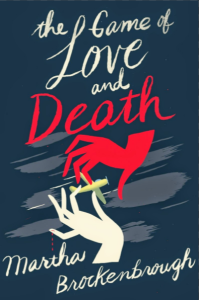 The Game of Love and Death, by Martha Brockenbrough, is an eternal love story staged by the ultimate masters of the game of life: Love and Death.
The Game of Love and Death, by Martha Brockenbrough, is an eternal love story staged by the ultimate masters of the game of life: Love and Death.
The masters choose players to unwittingly participate in a romantic dance through a life filled with jazz clubs and airfields. The players’ dance comes to such a poignant and satisfying culmination, that even the arch nemeses are overwhelmed by its divine beauty.
Brockenbrough establishes the fable in entrancing magic from the first paragraph, weaving the lyrical rhythm of language and fully developed characters with expert elegance:
The figure in the fine gray suit materialized in the nursery and stood over the sleeping infant, inhaling the sweet, milky night air. He could have taken any form, really: a sparrow, a snowy owl, even a common house fly. Although he often traveled the world on wings, for this work he always preferred a human guise.
The One and Only Ivan
The One and Only Ivan, by Katherine Applegate, is a fictional story that was inspired by Ivan, a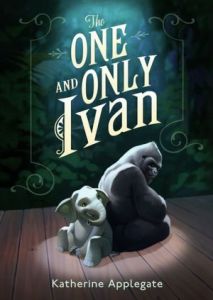 real gorilla at the Atlanta Zoo. You can read about the real Ivan here.
real gorilla at the Atlanta Zoo. You can read about the real Ivan here.
The One and Only Ivan is both heartbreaking and heartfelt, brimming with the tenacity of true friendship and the beauty of resolute spirit. Ivan’s soulful voice, his big heart, and the simple honesty of his view of the world draw us in and hold us till the well-deserved happy ending:
I am Ivan. I am a gorilla.
It’s not as easy as it looks.
People call me the Freeway Gorilla. The Ape at Exit 8. The One and Only Ivan, Mighty Silverback.
The names are mine, but they are not me. I am Ivan, just Ivan, only Ivan.
Also Known As
 Great beginnings don’t have to be serious. They can be fresh and fun too, like Also Known As by Robin Benway.
Great beginnings don’t have to be serious. They can be fresh and fun too, like Also Known As by Robin Benway.
Maggie Silver is the safe cracking prodigy of parents who work for the world’s premier spy organization. Maggie’s sass and snark don’t disappoint on this fast-paced caper, rife with international espionage and the unexpected perils of negotiating high school and first love:
I cracked my first safe when I was three.
I know that sounds like I’m bragging, but really, it wasn’t that hard. It was a Master Lock, the same combination lock that you probably have on your locker or bike. Anyone with Internet access and too much time on his or her hands can crack a Master Lock. I’m serious. Google it. I’ll wait.
See? Easy.
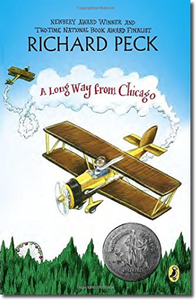 He was a National Book Award finalist TWICE, as well as claiming the Newbery Honor (A Long Way From Chicago) and Newbery Medal (A Year Down Yonder). Richard Peck was nothing short of a master and commander in the art of writing for young readers.
He was a National Book Award finalist TWICE, as well as claiming the Newbery Honor (A Long Way From Chicago) and Newbery Medal (A Year Down Yonder). Richard Peck was nothing short of a master and commander in the art of writing for young readers.

